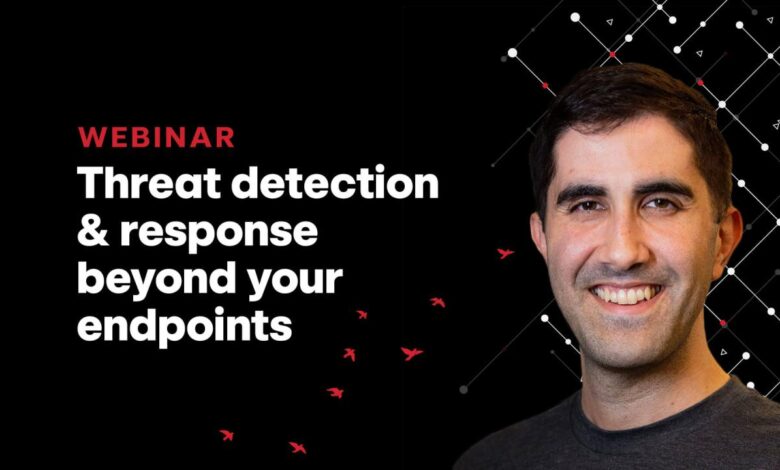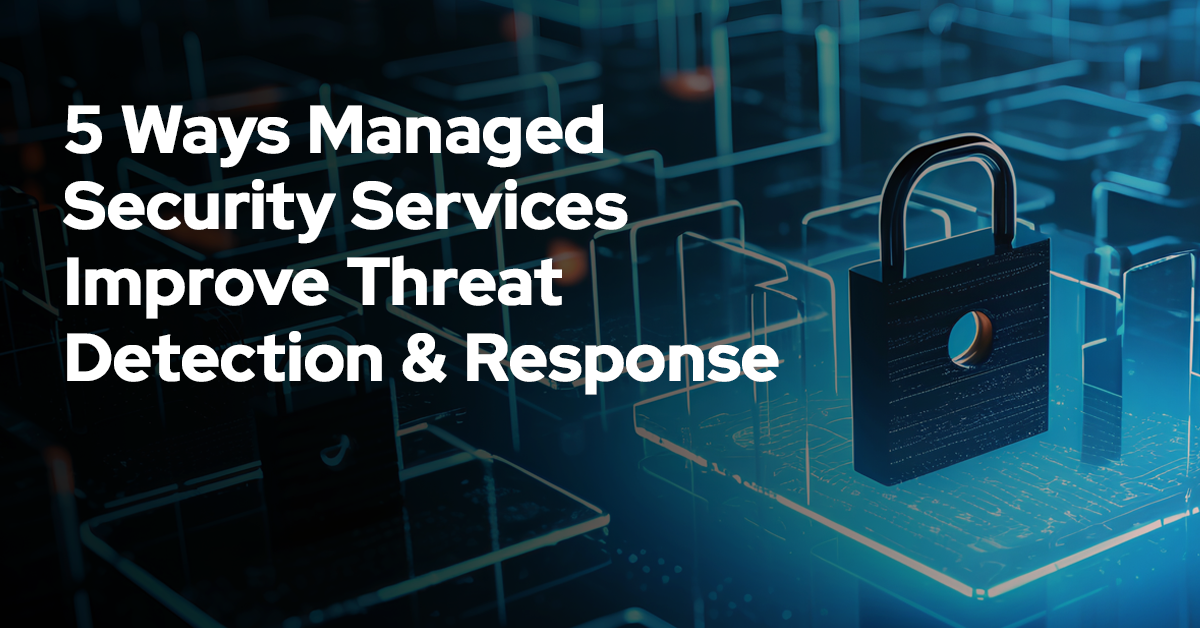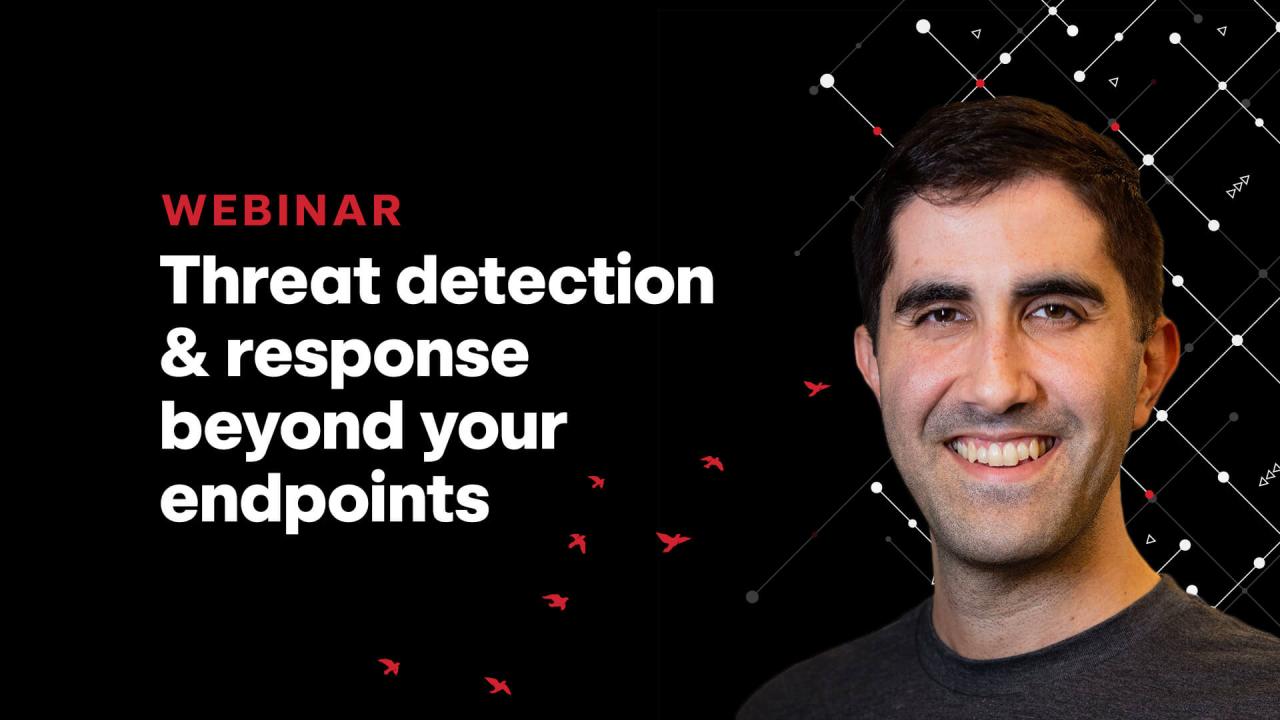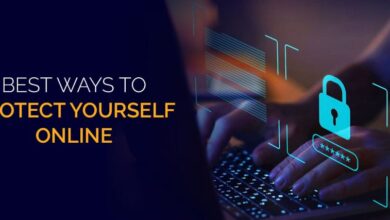
Attacks Are Advancing Are Your Defenses Ready?
Attacks are advancing are your threat detection and response capabilities? That’s the burning question facing every organization today. Cyber threats are evolving at an alarming rate, fueled by AI and automation, leading to increasingly sophisticated and frequent attacks. We’re seeing new attack vectors emerge daily, demanding a proactive and adaptable security posture. This post dives into the current threat landscape, assesses your defenses, and offers practical strategies to strengthen your security and prepare for what’s next.
From understanding the latest attack techniques to implementing robust detection systems and crafting effective incident response plans, we’ll cover it all. We’ll explore the crucial role of employee training, the power of emerging technologies like AI and machine learning in threat detection, and the importance of building a security-conscious culture within your organization. Get ready to level up your cybersecurity game!
Evolving Threat Landscape
The digital world is a battlefield, and the attacks are becoming increasingly sophisticated and frequent. Cybercriminals are constantly innovating, exploiting vulnerabilities, and developing new attack vectors to achieve their malicious goals, whether financial gain, data theft, or disruption of services. This necessitates a constant vigilance and adaptation in our defensive strategies.The impact of AI and automation is profoundly shaping the cyber threat landscape.
Attackers are leveraging AI to automate tasks like reconnaissance, vulnerability scanning, and even the development of malicious code, significantly increasing the speed and scale of attacks. This automation allows for more efficient targeting and personalized attacks, making defenses harder to implement effectively. Simultaneously, AI is being used to create more realistic and convincing phishing attempts and social engineering campaigns.
Advanced Persistent Threats (APTs) and Nation-State Actors
Advanced Persistent Threats (APTs) represent a significant challenge. These are highly sophisticated, long-term attacks often conducted by nation-state actors or well-funded criminal organizations. APTs often involve a combination of techniques, including spear phishing, malware, and exploitation of zero-day vulnerabilities, to infiltrate a target system and maintain persistent access for extended periods. The goal is often to steal intellectual property, sensitive data, or disrupt critical infrastructure.
Detection is extremely difficult due to their stealthy nature and the advanced techniques employed. For example, the SolarWinds attack demonstrated the devastating impact of an APT campaign, compromising thousands of organizations worldwide.
Rise of AI-Powered Attacks
AI is rapidly transforming the nature of cyberattacks. Attackers are using AI to automate various stages of the attack lifecycle, from identifying vulnerabilities to delivering payloads and evading detection. This automation allows for a higher volume of attacks and the ability to personalize attacks based on individual user profiles. AI-powered phishing campaigns, for instance, can dynamically adapt their content to increase their success rate.
Moreover, AI can be used to generate realistic synthetic data to train machine learning models for malicious purposes, potentially leading to advanced evasion techniques.
Emerging Attack Vectors and Techniques, Attacks are advancing are your threat detection and response capabilities
Several new attack vectors and techniques are emerging, demanding a proactive approach to cybersecurity. These include the increasing use of IoT devices as attack entry points, the exploitation of software supply chain vulnerabilities, and the rise of ransomware-as-a-service (RaaS) models. These new attack vectors often bypass traditional security measures, necessitating a multi-layered security approach.
Examples of Emerging Cyberattacks
The following table compares several emerging attack types, highlighting their targets, impact, and detection difficulty:
| Attack Type | Target | Impact | Detection Difficulty |
|---|---|---|---|
| Supply Chain Attack | Software vendors, businesses relying on compromised software | Data breach, system compromise, widespread disruption | High; often undetected until significant damage is done |
| IoT Botnet Attacks | Internet of Things devices (smart home devices, industrial control systems) | Distributed Denial of Service (DDoS) attacks, data theft, system control | Moderate; requires monitoring of IoT device traffic and vulnerabilities |
| AI-powered Phishing | Individuals, organizations | Credential theft, malware infection, financial loss | High; sophisticated techniques make detection challenging |
| Ransomware-as-a-Service (RaaS) | Businesses, individuals | Data encryption, data loss, financial loss, reputational damage | Moderate; requires proactive security measures and rapid response |
Threat Detection Capabilities Assessment: Attacks Are Advancing Are Your Threat Detection And Response Capabilities
So, attacks are advancing, and our threat landscape is evolving. That’s a given in today’s digital world. But what about our defenses? Are our threat detection and response capabilities truly prepared? This post dives deep into assessing the effectiveness of our threat detection systems, identifying weaknesses, and outlining best practices for improvement.
We’ll cover the key components of a robust system, potential vulnerabilities, and essential security tools.
Key Components of a Robust Threat Detection System
A robust threat detection system isn’t a single tool, but a layered approach combining various technologies and processes. It needs to be proactive, reactive, and capable of adapting to the ever-changing threat landscape. This involves a continuous cycle of monitoring, analysis, response, and improvement. Effective threat detection requires a holistic view, encompassing network security, endpoint security, and cloud security.
Failing to address any one area creates a significant vulnerability.
Potential Weaknesses in Existing Security Infrastructure
Many organizations struggle with maintaining adequate security visibility. This often stems from a lack of centralized logging and monitoring, resulting in fragmented data and delayed incident response. Another common weakness is insufficient automation. Manual processes are slow, prone to human error, and can’t scale to handle the volume of alerts generated by modern systems. Furthermore, a lack of skilled security personnel to analyze alerts and respond to incidents is a critical weakness.
Finally, neglecting regular security assessments and penetration testing leaves organizations vulnerable to undiscovered vulnerabilities. For example, a company might rely solely on signature-based antivirus, leaving them vulnerable to zero-day exploits.
Best Practices for Implementing Effective Security Monitoring and Logging
Effective security monitoring and logging begin with a centralized Security Information and Event Management (SIEM) system. This system aggregates logs from various sources, providing a single pane of glass for security analysts. It’s crucial to establish clear logging policies, ensuring that all relevant events are captured and retained for an adequate period. Regular review of logs is essential, proactively identifying potential threats.
Furthermore, implementing a robust alert management system helps prioritize and triage security alerts, ensuring that critical events are addressed promptly. Automated response mechanisms, such as automated blocking of malicious IP addresses, significantly reduce response times and minimize the impact of attacks. Finally, regular training for security personnel is crucial for effective threat detection and response.
Essential Security Tools and Technologies
Implementing effective security requires a combination of tools and technologies. The specific tools will vary depending on the organization’s size, industry, and specific needs. However, some essential tools include:
- Intrusion Detection/Prevention Systems (IDS/IPS): These systems monitor network traffic for malicious activity, alerting on suspicious patterns and blocking attacks. Limitations: Can generate a high volume of false positives, requiring careful tuning and analysis.
- Security Information and Event Management (SIEM): Collects and analyzes security logs from various sources, providing centralized visibility and threat detection capabilities. Limitations: Can be complex to implement and manage, requiring specialized skills.
- Endpoint Detection and Response (EDR): Monitors endpoints (computers, servers, mobile devices) for malicious activity, providing detailed insights into threats and enabling rapid response. Limitations: Can impact system performance if not properly configured.
- Vulnerability Scanners: Identify security vulnerabilities in systems and applications, allowing for proactive remediation. Limitations: Cannot detect all vulnerabilities, especially zero-day exploits.
- Threat Intelligence Platforms: Provide access to threat intelligence feeds, enabling organizations to stay informed about emerging threats and proactively mitigate risks. Limitations: Requires careful evaluation of the reliability and accuracy of threat intelligence sources.
Incident Response Strategies

A robust incident response plan is crucial for minimizing the damage caused by a security breach. It’s not a matter of
- if* an attack will occur, but
- when*. Having a well-defined, tested plan in place can significantly reduce downtime, financial losses, and reputational damage. This plan should be regularly reviewed and updated to reflect evolving threats and changes within your organization’s infrastructure.
Step-by-Step Incident Response Plan
This hypothetical scenario involves a ransomware attack targeting a small business’s file server. The plan Artikels actions following the detection of unusual network activity and encryption of files.
- Preparation: This phase, ideally conducted before any incident, involves establishing a dedicated incident response team, defining roles and responsibilities, creating communication protocols, and securing backups. Regular security awareness training for employees is also vital.
- Detection & Analysis: Upon discovering the ransomware attack (e.g., through monitoring tools indicating unusual network traffic or employee reports of inaccessible files), the incident response team immediately isolates the affected server from the network to prevent further spread. They then analyze the attack vector, the extent of the compromise, and the type of ransomware involved.
- Containment: The isolated server is thoroughly examined for malware. Network traffic is analyzed to determine if the attack has spread beyond the initial target. Any compromised accounts are identified and secured.
- Eradication: The ransomware is removed from the affected server. This might involve using specialized malware removal tools or restoring from a clean backup. All affected systems are thoroughly scanned for any lingering malware.
- Recovery: The business restores data from a recent backup. System configurations are checked and updated to mitigate future vulnerabilities. This phase includes verification of data integrity and functionality.
- Post-Incident Activity: A comprehensive post-incident review is conducted to identify weaknesses in the security posture. This review informs improvements to the incident response plan, security controls, and employee training programs. Legal and regulatory requirements are also addressed.
Strategies for Containing and Mitigating Impact
Containment focuses on limiting the spread of the attack. This includes isolating infected systems, blocking malicious network traffic, and disabling compromised accounts. Mitigation involves reducing the impact of the breach, such as implementing temporary workarounds, communicating with affected parties, and providing alternative services. For example, in the ransomware attack scenario, a temporary solution might involve providing access to critical data from a backup server while the main server is being restored.
Recovering Systems and Data
Data recovery involves restoring data from backups, utilizing data recovery tools if necessary, and verifying data integrity. System recovery includes reinstalling operating systems, restoring system configurations, and patching vulnerabilities. A phased approach, starting with critical systems, is recommended. In our ransomware example, this might involve prioritizing the restoration of customer databases and financial records before restoring less critical files.
Comparison of Incident Response Methodologies
Several methodologies exist, each with strengths and weaknesses. For example, the NIST Cybersecurity Framework provides a flexible, risk-based approach, focusing on identifying, protecting, detecting, responding to, and recovering from cybersecurity incidents. Incident response frameworks like the SANS Institute’s Incident Handling Methodology emphasize a structured, step-by-step approach. The choice of methodology depends on the organization’s size, resources, and risk tolerance.
A smaller business might opt for a simpler, more streamlined approach, while a larger organization may require a more complex, comprehensive framework.
Strengthening Security Posture
With attacks constantly evolving, bolstering your organization’s security posture is paramount. A proactive approach, encompassing employee training, robust network security, and strong access controls, is crucial for mitigating risks and protecting valuable data. This section Artikels key strategies for strengthening your defenses.
A multi-layered approach to security is essential. This means implementing a range of security measures that work together to protect your systems and data. No single solution is foolproof, but a comprehensive strategy significantly reduces vulnerabilities.
Security Awareness Training Program
A comprehensive security awareness training program is the cornerstone of a strong security posture. Effective training empowers employees to identify and avoid phishing attempts, malware, and other threats. The program should include regular modules covering topics such as phishing recognition, password security, social engineering tactics, and safe browsing practices. Simulated phishing campaigns can effectively assess employee awareness and reinforce learning.
Furthermore, regular updates are crucial to address emerging threats and vulnerabilities. Consider incorporating interactive elements, such as quizzes and scenarios, to enhance engagement and knowledge retention. Finally, clearly defined reporting procedures for suspicious activity are essential for prompt incident response.
Improving Network Security and Data Protection
Strengthening network security and data protection involves multiple layers of defense. Implementing a robust firewall is the first line of defense, filtering out malicious traffic before it reaches internal systems. Regular security audits and penetration testing identify vulnerabilities and weaknesses within the network infrastructure. Intrusion detection and prevention systems (IDPS) continuously monitor network traffic for suspicious activity, alerting security personnel to potential threats.
Data encryption both in transit and at rest is crucial for protecting sensitive information. Regular backups and a disaster recovery plan are essential for business continuity in case of a security breach or other unforeseen events. Consider segmenting your network to limit the impact of a potential breach. Finally, adherence to industry best practices and compliance regulations (e.g., GDPR, HIPAA) ensures a robust security foundation.
Implementing Multi-Factor Authentication and Access Controls
Multi-factor authentication (MFA) adds an extra layer of security beyond traditional passwords. By requiring multiple forms of authentication, such as a password and a one-time code from a mobile app, MFA significantly reduces the risk of unauthorized access. Access controls, including role-based access control (RBAC), restrict access to sensitive data and systems based on an individual’s role and responsibilities.
Regularly review and update user access permissions to ensure they remain appropriate. Principle of least privilege should be strictly enforced, granting users only the access necessary to perform their job functions. Strong password policies, including password complexity requirements and regular password changes, are also crucial. Consider using password managers to help employees manage their passwords securely.
Centralized identity management systems can streamline user provisioning and access control management.
Vulnerability Management and Penetration Testing
Vulnerability management involves identifying, assessing, and mitigating security vulnerabilities in systems and applications. Regular vulnerability scans using automated tools are crucial for detecting known vulnerabilities. Penetration testing simulates real-world attacks to identify exploitable weaknesses in your security defenses. A combination of both automated and manual penetration testing provides a comprehensive assessment of your security posture. Prioritization of vulnerabilities based on their severity and likelihood of exploitation is essential.
Implementing a patch management process ensures that systems are updated with the latest security patches promptly. Regular security assessments and audits provide an ongoing evaluation of your security effectiveness. Thorough documentation of vulnerabilities, remediation efforts, and ongoing monitoring is critical for maintaining a secure environment.
| Security Measure | Implementation Details | Benefits |
|---|---|---|
| Security Awareness Training | Regular modules covering phishing, password security, social engineering, and safe browsing practices; simulated phishing campaigns; clear reporting procedures. | Reduced human error, improved threat awareness, faster incident response. |
| Network Security Enhancements | Robust firewall, regular security audits, intrusion detection/prevention systems (IDPS), data encryption, network segmentation, disaster recovery plan. | Improved threat detection and prevention, minimized impact of breaches, business continuity. |
| Multi-Factor Authentication (MFA) | Implement MFA for all critical systems and accounts, using methods like one-time codes or biometrics. Enforce strong password policies. | Significant reduction in unauthorized access, enhanced account security. |
| Vulnerability Management & Penetration Testing | Regular vulnerability scans, penetration testing (both automated and manual), patch management, security assessments and audits. | Proactive identification and mitigation of vulnerabilities, improved overall security posture. |
Emerging Technologies in Threat Detection
The cybersecurity landscape is constantly evolving, with increasingly sophisticated attacks demanding equally advanced defense mechanisms. Traditional security methods are often insufficient to combat the speed and complexity of modern threats. This is where emerging technologies, particularly in the realms of artificial intelligence, machine learning, and blockchain, are proving invaluable in enhancing threat detection and response capabilities.Machine learning and artificial intelligence are revolutionizing threat detection by automating previously manual processes and analyzing vast amounts of data far beyond human capacity.
These technologies can identify patterns and anomalies indicative of malicious activity that would otherwise go unnoticed. This proactive approach allows for quicker identification and mitigation of threats, minimizing damage and downtime.
Machine Learning and Artificial Intelligence in Threat Detection
Machine learning algorithms, trained on massive datasets of known threats and network behavior, can identify deviations from established baselines. This allows for the detection of zero-day exploits and other previously unknown threats. Artificial intelligence, through its ability to learn and adapt, further enhances this process, enabling systems to constantly refine their threat detection capabilities. For example, AI-powered systems can analyze network traffic in real-time, flagging suspicious connections or unusual data flows that might indicate a phishing attempt or malware infection.
Furthermore, AI can automate incident response by prioritizing alerts, isolating infected systems, and even initiating remediation actions.
Security Information and Event Management (SIEM) Systems: Benefits and Limitations
SIEM systems aggregate and analyze security logs from various sources, providing a centralized view of an organization’s security posture. Benefits include improved threat visibility, streamlined incident response, and enhanced compliance. However, SIEM systems can be complex to implement and manage, requiring specialized expertise and significant upfront investment. Furthermore, the sheer volume of data processed can lead to alert fatigue, where analysts become overwhelmed by the number of alerts, potentially missing critical events.
Effective SIEM implementation requires careful planning, robust data filtering, and skilled security personnel to analyze and interpret the information effectively. For instance, a large financial institution might use a SIEM system to monitor transactions for fraudulent activity, but the effectiveness depends heavily on the quality of the data ingested and the expertise of the analysts interpreting the alerts.
Blockchain Technology in Enhancing Security
Blockchain’s decentralized and immutable nature offers significant potential for enhancing security. Its inherent transparency and tamper-proof characteristics can be leveraged to improve data integrity and authenticity. For example, blockchain can be used to secure digital identities, making it more difficult for attackers to impersonate users or compromise sensitive information. Furthermore, blockchain can be used to create a secure audit trail of security events, providing greater accountability and facilitating faster incident response.
The use of blockchain in supply chain security, for example, can help track the movement of goods and materials, reducing the risk of counterfeiting or tampering.
Visual Representation of Integrated Security Technologies
Imagine a layered security model. The outermost layer is a firewall, acting as the first line of defense against external threats. Behind this, intrusion detection and prevention systems (IDS/IPS) monitor network traffic for malicious activity. Next, endpoint detection and response (EDR) solutions protect individual devices from malware and other threats. A SIEM system sits at the core, integrating and analyzing data from all these layers to provide a comprehensive view of the security landscape.
Finally, AI and machine learning algorithms enhance the capabilities of each layer, providing automated threat detection and response. This layered approach, with each layer working in concert with the others, provides robust and comprehensive protection.
The Human Factor in Security

Let’s face it: even the most sophisticated security systems are vulnerable if the people using them aren’t properly trained and aware. The human element is often the weakest link in the security chain, making employee training and a security-conscious culture absolutely vital in preventing attacks. This isn’t just about ticking a box; it’s about building a proactive defense against increasingly sophisticated threats.The effectiveness of any security infrastructure hinges significantly on the actions and awareness of its users.
A well-trained workforce is less likely to fall prey to social engineering tactics and more likely to identify and report suspicious activity promptly. This proactive approach significantly reduces the window of opportunity for attackers and minimizes potential damage.
Cyberattacks are getting more sophisticated, so it’s crucial to ensure your threat detection and response capabilities are up to par. Building robust, secure applications is key, and that’s where understanding the latest development trends comes in, like exploring the possibilities offered by domino app dev, the low-code and pro-code future , can help you create more secure and efficient applications.
Ultimately, strong app security directly impacts your overall ability to defend against evolving attacks.
Social Engineering Techniques
Attackers frequently employ social engineering, manipulating individuals to divulge confidential information or grant unauthorized access. These techniques exploit human psychology, relying on trust, urgency, and fear. Common tactics include phishing emails (masquerading as legitimate communications to trick recipients into clicking malicious links or revealing credentials), pretexting (creating a believable scenario to gain trust and information), baiting (offering tempting incentives to compromise security), and quid pro quo (offering a service or favor in exchange for sensitive information).
For example, a phishing email might appear to be from a bank, urging the recipient to update their account details immediately, linking to a fake login page. A pretexting attack might involve an attacker posing as a technical support representative to gain access to a user’s computer.
Effective Security Awareness Campaigns
Successful security awareness campaigns need to be engaging, relatable, and tailored to the specific audience. Instead of dry technical information, focus on real-world scenarios and relatable examples. For instance, a campaign could use short videos depicting common social engineering attacks, followed by tips on how to identify and avoid them. Regular security newsletters with concise, easily digestible information and interactive training modules can reinforce key concepts.
Gamification, such as quizzes and simulated phishing attacks, can make learning more engaging and effective. The key is to make security training a continuous process, not a one-time event. Regular refreshers and updates are crucial to maintain awareness of evolving threats.
Fostering a Security-Conscious Culture
Creating a security-conscious culture requires a multi-faceted approach. Leadership buy-in is crucial; security needs to be viewed as a shared responsibility, not just the IT department’s concern. Open communication channels should encourage employees to report suspicious activity without fear of reprisal. Regular security awareness training should be integrated into the onboarding process and reinforced throughout employment.
Incentivizing employees to report security incidents and rewarding responsible behavior can significantly contribute to a culture of security. Clear policies and procedures, coupled with regular communication and feedback, help establish expectations and ensure everyone understands their role in protecting organizational assets. Furthermore, incorporating security awareness into everyday conversations and team meetings can subtly reinforce the importance of security practices.
For instance, regularly discussing recent cyber security news and its relevance to the organization can foster a more informed and cautious approach.
End of Discussion

In a world of ever-evolving cyber threats, staying ahead of the curve is paramount. This isn’t just about deploying the latest technology; it’s about building a holistic security strategy that encompasses robust threat detection, a well-defined incident response plan, and a security-conscious culture. By understanding the current threat landscape, regularly assessing your vulnerabilities, and investing in employee training, you can significantly strengthen your organization’s security posture and protect yourself from the ever-advancing wave of cyberattacks.
Remember, proactive security is the best defense.
Question & Answer Hub
What is a SIEM system and why is it important?
A Security Information and Event Management (SIEM) system collects and analyzes security logs from various sources to detect and respond to security threats. It’s crucial for centralized monitoring, threat detection, and incident response.
How often should we conduct security awareness training?
Ideally, security awareness training should be ongoing, with regular refresher courses and updates on emerging threats. At minimum, annual training is recommended.
What are some common social engineering techniques?
Phishing emails, pretexting (creating a false sense of urgency or authority), baiting (offering something enticing to trick users), and quid pro quo (offering something in exchange for information) are common social engineering tactics.
What is the difference between penetration testing and vulnerability scanning?
Vulnerability scanning identifies potential weaknesses in your systems. Penetration testing simulates real-world attacks to exploit those vulnerabilities and assess the effectiveness of your security controls.





